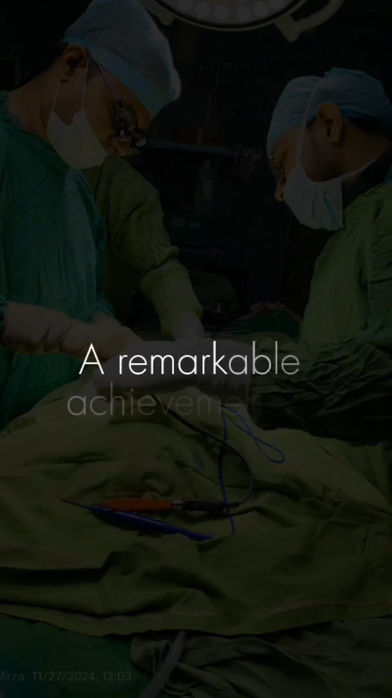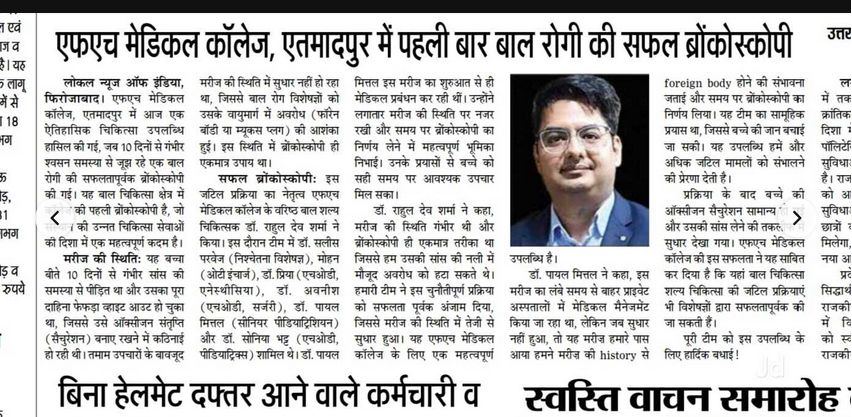
Lets make Paediatric Healthcare Better Together.
About Me

MINOR
- CLW Suturing
- Accesory Digit Excision
- Labial Synichiae Release
- Incision and Drainage of Abscess
INTERMEDIATE
-
- Circumcision
-
- Rectal Biopsy
-
- Diagnostic Cystoscopy
-
- Upper GI Endoscopy
-
- Intercostal Drainage Insertion
MAJOR
- Inguinal Herniotomy
- Umbilical Hernia Repair
- Central Line Insertion
- Orchidopexy
- Mini-Laparotomy
- Laparoscopy
SUPRA- MAJOR
- Laparotomy for Small Bowel Obstruction
- Intussusception
- Hypospadias Correction
- Ventriculo-peritoneal Shunt Insertion
- Colostomy
- Colostomy Closure
- Posterior Urethal Valve Fulguration
Add a Title
Grades of Paediatric Surgical Operations
Surgeries/
Expertise
EXTENSIVE
- Pyeloplasty- Fundoplication- Thoracotomy- Hepatectomy- Pull-Through Procedure- Reimplantation of Ureters- Porto-Enterostomy- Exploratory Laparotomy

Patient Information

Biliary Atresia is a condition in which inflammation develops within the bile ducts around the time of birth. The inflammation can occur in any of the bile ducts both inside and outside of the liver. This leads to bile duct damage and reduces the flow of bile which subsequently causes scarring (fibrosis or cirrhosis) of the liver.
BILIARY ATRESIA

A hydrocele is a swelling in the scrotum caused by a collection of fluid. It can be on one side or can affect both the sides of the scrotum. It is normally present in a few children at birth, and it may disappear in due course of time by it own. However, if it is increasing in size or persists beyond 2 to 3 years of age, it may need treatment.
HYDROCELE

The testicles are the sex organs that ultimately produce sperms and the male hormones like testosterone. They are formed near the kidneys in the foetal life. As the baby grows, they descend from the abdomen to the groin, through a hole or a defect in the lower abdominal wall by about 8th month of intrauterine life. Subsequently, around the time of birth of the baby, they descend into the scrotum. Normally, they are in the scrotum at the time of birth.
UNDESCENDED TESTIS

One of the most common urinary problems among children is infection of urinary tract (UTI). An estimated 3 % of girls and 1% of boys have had a urinary tract infection (UTI) by the age of 11. The symptoms are not always obvious to parents, and young children are usually unable to describe how they feel. However recognizing and treating urinary tract infection is important. Untreated UTI can lead to serious kidney problems that could threaten the life of your child.
URINARY TRACT INFECTION

Hydrocephalus is excessive accumulation of Cerebrospinal Fluid (CSF) within brain cavities called Ventricles. CSF is produced in the ventricles and circulates through the brain into the spinal cord before it is reabsorbed form the brain into the blood stream. When this pathway is blocked due to any reason, back pressure develops in the ventricles and results in hydrocephalus. CSF has many important viz. nourishment, cushion like protection of the nervous tissue and to carry waste products away.
HYDROCEPHALUS
Add a Title

Success Story

5500
+
SURGERIES

19
+
AWARDS

27
+
PUBLICATIONS

14+
Years
EXPERIENCE
MBBS
GSVM Medical College, Kanpur
DNB
(Diplomate of National Board) in Pediatric Surgery
Diploma in Minimal Access Surgery
World Laparoscopy Hospital,
Gurgaon/New Delhi
M.Ch.
Master of Chirurgiae
Lilavati Hospital & Research Centre, Mumbai
About Me
Featured in the News
News/Publications
New Articles and Publications
Click Here..
Heading 5
May 2020
International Journal of Otorhinolaryngology and Head and Neck Surgery 6(6):1203
1
May 2020
Journal of Pediatric Surgery 55(10)
May 2020
Journal of Pediatric Surgery 55(10)
March 2022
BMJ Case Reports 15(3):e246041
Heading 5
June 2024
2
February 2016
Journal of Pediatric Sciences 8
February 2016
Journal of Pediatric Sciences 8
November 2024
Indian Pediatrics Case Reports 4(4):226-229
Heading 5
November 2023
Journal of Indian Association of Pediatric Surgeons 28(6)
3
June 2024
Indian Journal of Colo-Rectal Surgery 6(2):37-40
June 2024
Indian Journal of Colo-Rectal Surgery 6(2):37-40
May 2024
The Lancet Global Health 12(7):e1094–103
Heading 5
June 2023
Journal of Indian Association of Pediatric Surgeons 28(3):263-263
4
September 2023
Journal of Indian Association of Pediatric Surgeons 28(5):446
September 2023
Journal of Indian Association of Pediatric Surgeons 28(5):446
July 2023
Journal of Indian Association of Pediatric Surgeons 28(4)
Heading 5
March 2021
Journal of Indian Association of Pediatric Surgeons 26(2):120
6
-
May 2021
-
Journal of Indian Association of Pediatric Surgeons 26(3):144
May 2021
Journal of Indian Association of Pediatric Surgeons 26(3):144
March 2021
Anaesthesia 76(6):748-758
TESTIMONIALS
(1).png)
Dr. Rahul Deo Sharma
Laparoscopic & Robotic Pediatric Surgeon | Pediatric Urologist
MBBS, DNB, MCh, DrNB (Pediatric Surgery)
FMAS, DMAS, FIAGE, MNAMS
-
Expert in Minimally Invasive Pediatric Surgeries – Laparoscopic & Robotic procedure
-
Specialized in Pediatric Urology, including congenital and complex urological conditions
-
Former Consultant at Lilavati Hospital & Research Centre, Mumbai
-
Former Fellow at World Laparoscopic Hospital, New Delhi
-
Skilled in Advanced Pediatric Laparoscopic Procedures – hernia, undescended testis, appendectomy, etc.
-
Proficient in treating Neonatal Surgical Conditions and Pediatric GI & Thoracic Disorders
-
Member of National Academy of Medical Sciences (MNAMS)
-
Trained in Fellowship of Minimal Access Surgery (FMAS) and Diploma in MAS (DMAS)
-
Life member of Indian Association of Gastrointestinal Endo Surgeons (FIAGE)











